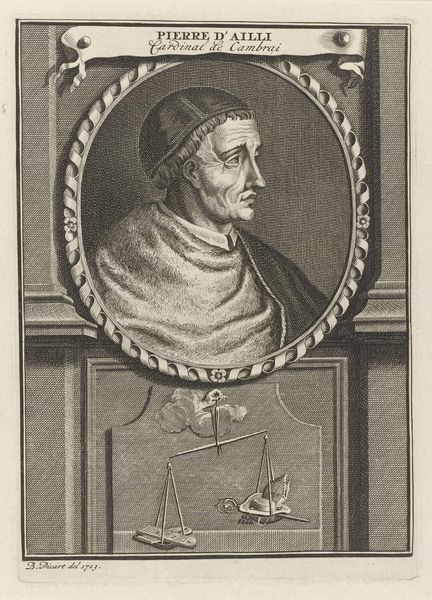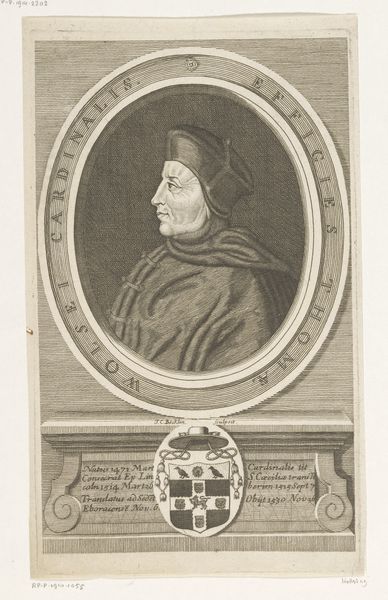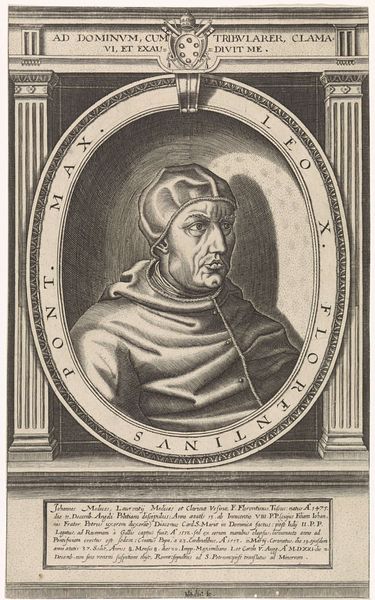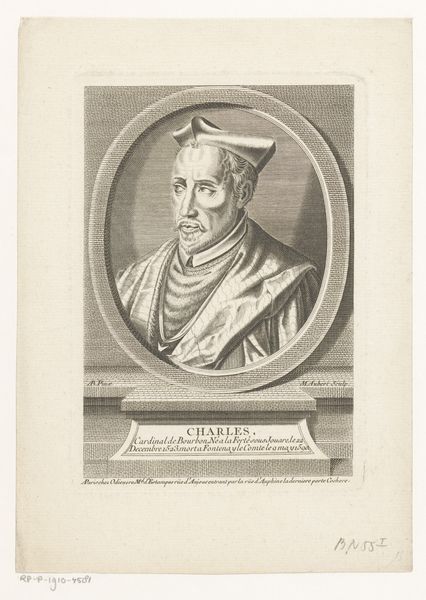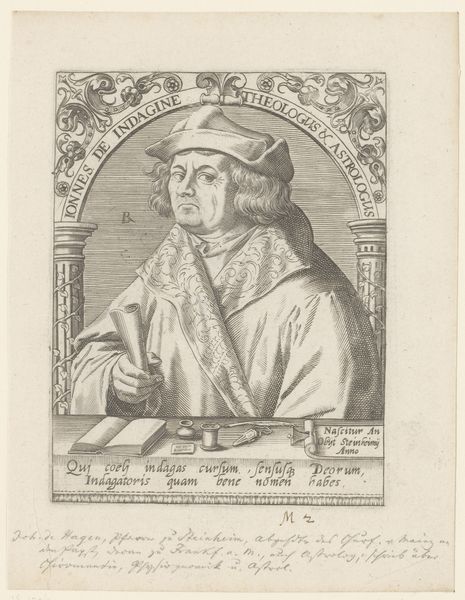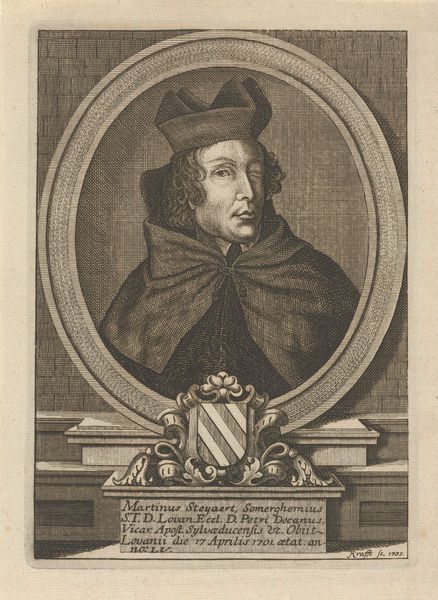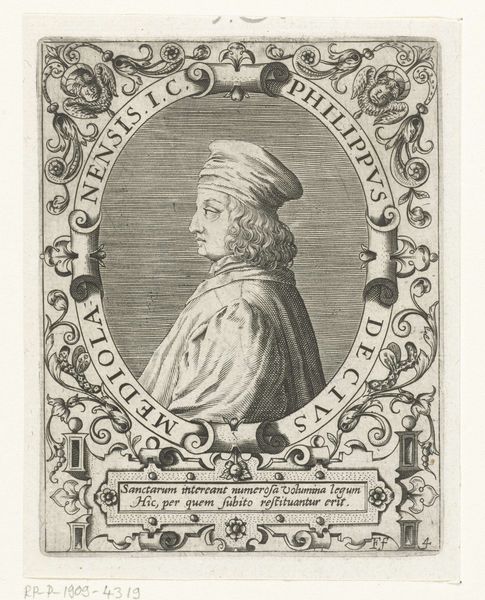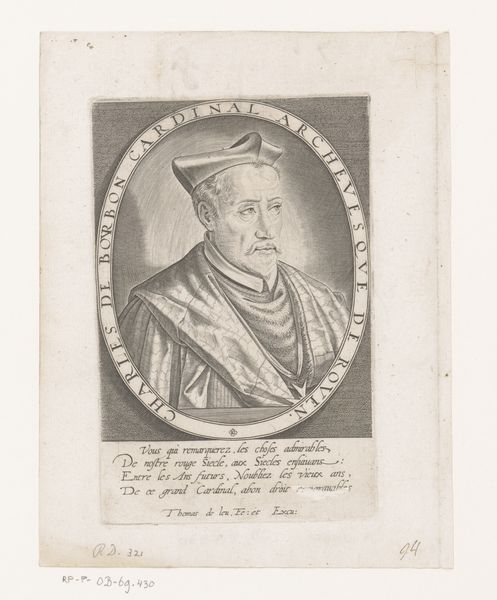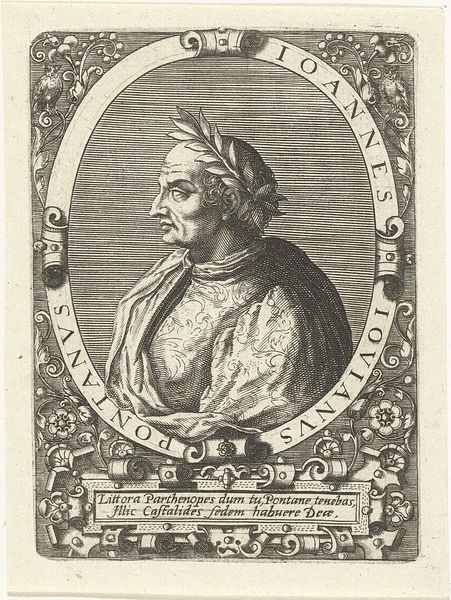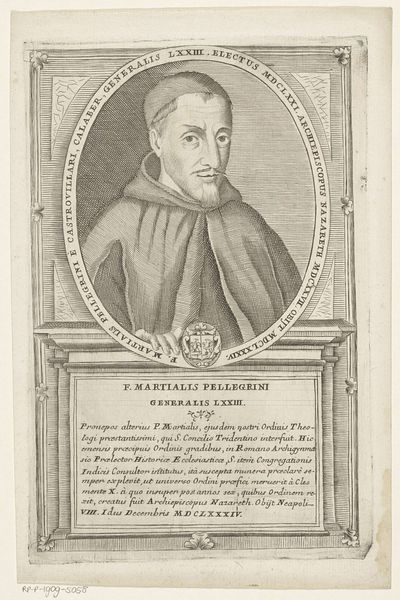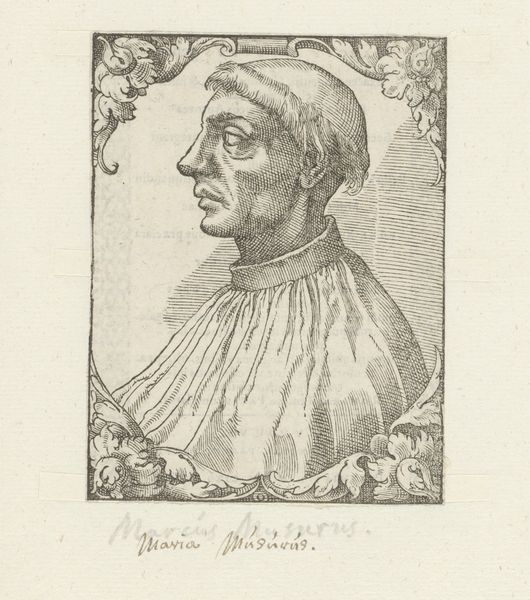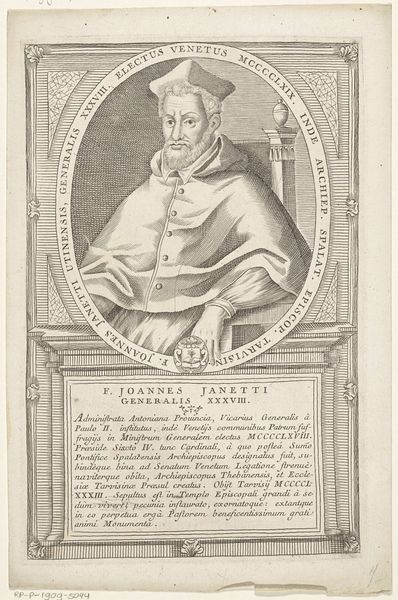
print, engraving
#
portrait
#
aged paper
#
light pencil work
#
baroque
# print
#
old engraving style
#
figuration
#
old-timey
#
19th century
#
history-painting
#
engraving
Dimensions: height 210 mm, width 154 mm
Copyright: Rijks Museum: Open Domain
Curator: Before us, we have an engraving titled "Portret van Pierre d'Ailly." Its creation is dated somewhere between 1713 and 1763. It’s currently held at the Rijksmuseum. Editor: My first impression is one of severe austerity. The crisp lines of the engraving give a sense of cool detachment, a man scrutinized. Curator: Indeed. Observe the composition; the portrait, contained within a decorative oval, is set above a panel featuring symbolic objects – scales prominently displayed. The balance and precision in the lines evoke rationality. Note how the oval frame softens the sharp geometry with its leaf ornamentation, adding layers to the visual experience. Editor: What strikes me is the context surrounding such depictions. Prints like this were crucial in disseminating images of power. A clergyman reproduced for a wide audience signals the enduring influence of the church and its figures in society, far beyond the walls of any cathedral. Curator: Precisely, it highlights the dialectic. His stern expression, meticulously rendered by the engraver, enhances the gravity associated with his office. His gaze projects intellectualism. The hat signifies belonging to clergy. The choice to present him in profile flattens him to a representative of authority. Editor: It is fascinating to consider the power dynamics embedded in these reproductions. Was this image intended to inspire piety, fear, respect, or something else entirely? Was it even authorized? Engravings can function as propaganda and as records, playing a significant role in shaping historical narratives. Curator: A multi-layered artifact indeed, both for the symbolic language embedded in the visual construction and for the ways that reproduction impacts historical perspective. Editor: Looking at this print, one sees not just an image but a historical document of power and representation during the Baroque period. It gives a face to institutions.
Comments
No comments
Be the first to comment and join the conversation on the ultimate creative platform.
